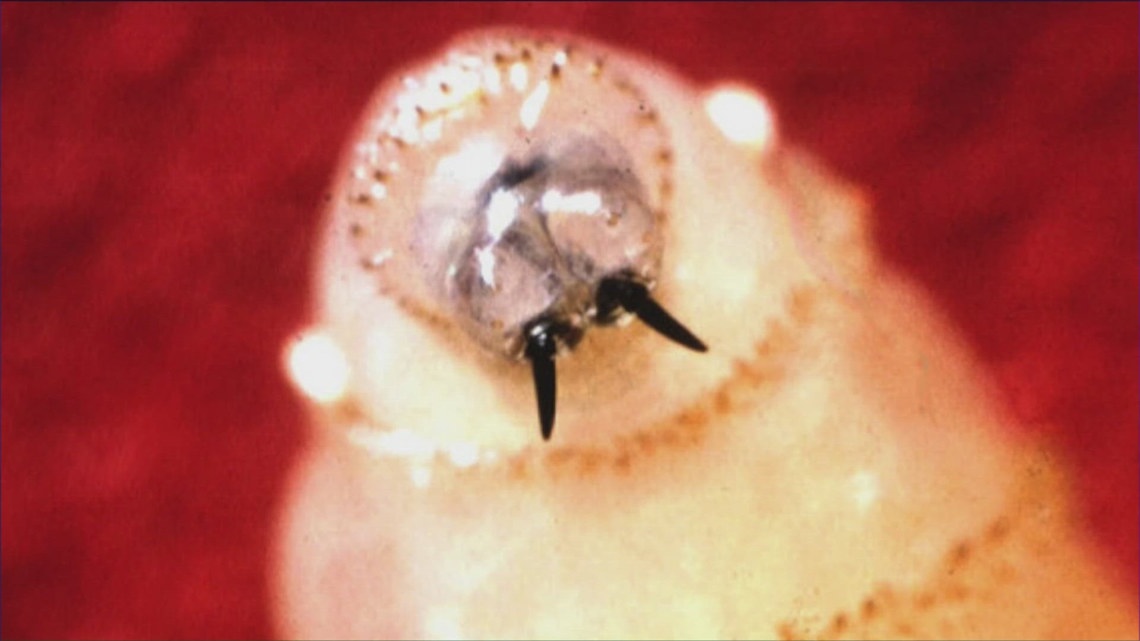
It’s an effort to combat the spread of the flesh-eating screwworm fly, a pest that poses a serious threat to the beef industry, wildlife and even household pets.
AUSTIN, Texas — The Texas Department of Agriculture will be deploying synthetic bait in an effort to combat the spread of the flesh-eating screwworm fly, a pest that poses a serious threat to the beef industry, wildlife and even household pets.
On Monday, Texas Agriculture Commissioner Sid Miller said his department will introduce Swormlure-5, a bait designed to attract adult screwworm flies.
The bait is an improved version of two previously deployed screwworm baits. It will be used in combination with the release of sterilized flies and the application of an insecticide, Dichlorvos. A similar approach helped eliminate the flies during an isolated outbreak in the 1970s, after they had been eradicated from the U.S. in the 1960s.
“Back then, we used this combination to help wipe out one of the nastiest parasites we’ve ever faced,” Miller said. “Swormlure-5, created using modern science and built upon previous versions, Swormlure-2 and Swormlure-4, is a potent synthetic attractant that mimics the scent of open wounds, drawing adult screwworm flies to the bait, where they die.”
Miller said Swormlure-5 bait is highly targeted to screwworm and blow flies and should pose no threat to beneficial insects such as honeybees, monarch butterflies and other pollinators.
“In prior research and deployment, this method eliminated approximately 90% of the flies within a two- to four-week period,” he said. “The remaining 10% were eliminated with the release of sterile male flies in the areas where traps were deployed.”
According to the USDA, aerial drops of sterile screwworm flies are expected to begin around July of next year. The release will focus primarily on South Texas and the U.S.–Mexico border region.
These sterile males will then be released into the wild where they will mate with female screwworm flies. Because the sterilized males cannot fertilize eggs, no larvae hatch — effectively reducing the population over time.
The screwworm fly has long been a concern for agriculture and animal health experts. Its larvae can infest wounds in warm-blooded animals, causing severe tissue damage and potentially death if left untreated.
By targeting the screwworm population now, officials hope to prevent a widespread outbreak that could devastate ranching operations and local wildlife in the region.
“We’ve beaten the New World screwworm before, and we’ll do it again. But it will take all hands on deck,” Miller added. “We need another success story like we had in the ‘70s, and I believe Swormlure-5 bait is the game-changer that will get us there.”
